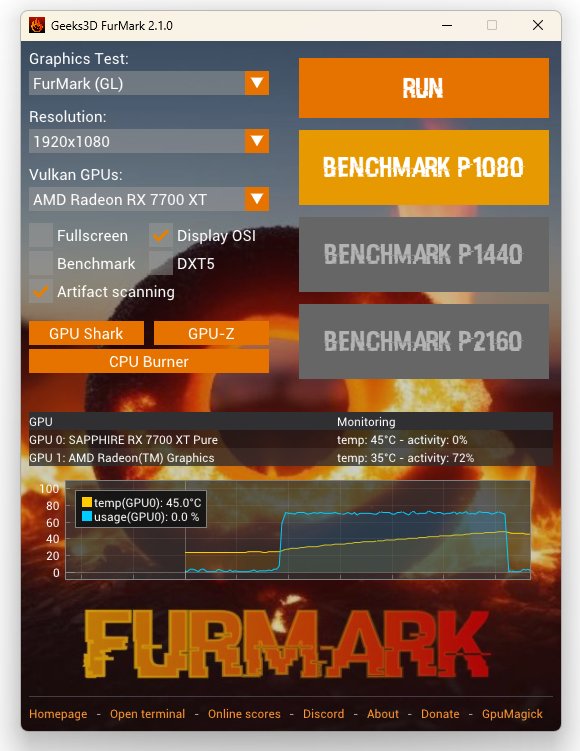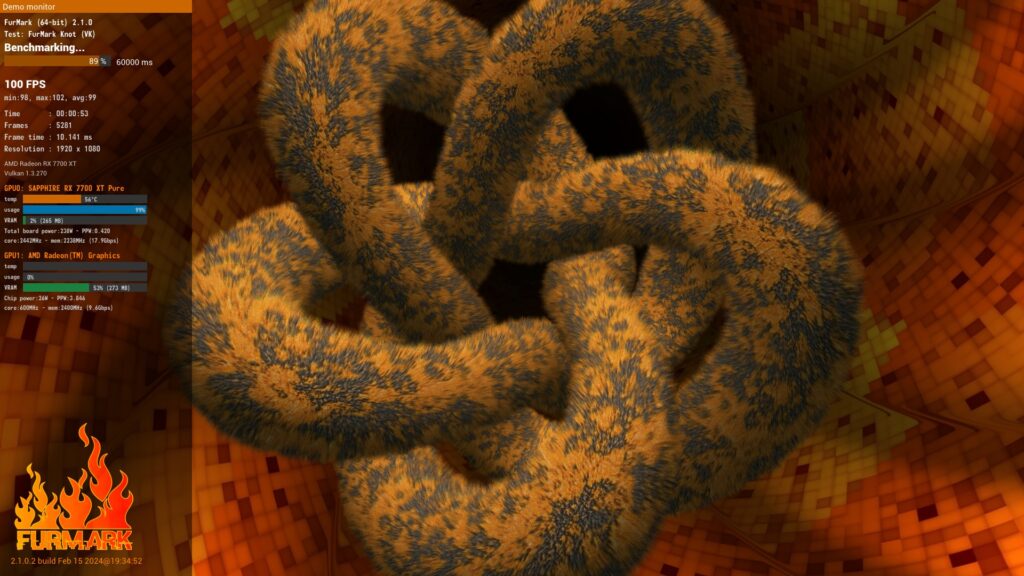FurMark 2 leaves beta phase, new multiplatform test
Back in the days when GPUs didn’t have sophisticated power management, the FurMark test was widely used to test their power consumption (and potentially stability). It was something of a stress test that exposed what maximum levels of power consumption and temperatures GPUs could reach. The test, dating back to 2007, has now been given a new version, the FurMark 2. It uses more modern technology like Vulkan and is also multiplatform now.
FurMark 2 started development in 2022 and has now been publicly released, left beta phase and now the final version is out (not 2.0, but already 2.1.0.2). It includes the classic donut* rendering benchmark, but also adds a new knot rendering test. However, it should be remembered that the scores are not comparable between the different tests.
FurMark can be used as a (synthetic) GPU benchmark, but the main purpose will probably still be to test GPU behavior under maximum load, a scenario that is not usually encountered in games. For example, graphics cards like the GeForce RTX 4090, which often run at significantly lower power consumption than what’s written in the specs in games, run practically at their TDP in FurMark 2, confirming that this figure isn’t there just for the heck of it.

The big news is that FurMark 2 is designed and developed as a multiplatform test, whereas the original FurMark was designed for Windows and used the DirectX API. FurMark 2 has support for the Vulkan 1.1 and OpenGL 3.2 APIs, with more likely to be added in the future. The benchmark is built on top of the GeeXLab 3D engine.

Officially, the benchmark is available for Windows and Linux (it is even supposed to run on Raspberry Pi 5). Apple macOS is not yet supported, but support for it is in the works and could be added sometime in the future (probably once support for the proprietary Metal API is available).
Otherwise, FurMark 2 should have fairly wide compatibility, on Linux and Windows it provides a 32-bit build for the needs of older systems in addition to the 64-bit version. Linux users may like the fact that the command line usability options have been improved.

The authors state that, as a performance benchmark, FurMark 2 is a relatively simple task compared to the complexity of today’s state-of-the-art games. However, it also has an online database of results, so it can be used for various quick comparisons. So, especially on Linux (and someday maybe macOS), where there aren’t as many tools readily available to measure graphics performance as there are on Windows, it could be a useful option.
Sources: FurMark, VideoCardz
English translation and edit by Jozef Dudáš
⠀








